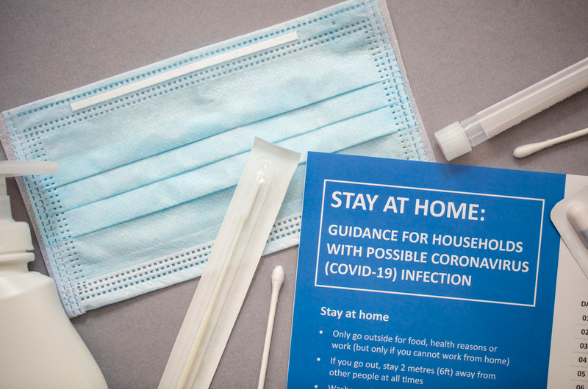By Sean Paisan on October 6, 2021-Jackson Lewis PC
On October 5, 2021, Governor Newsom signed Assembly Bill 654 (AB 654), which expands the types of employers who are exempt from COVID-19 outbreak reporting requirements. Specifically, under AB 654, employers such as community clinics, adult day health centers, community care facilities, and child daycare facilities are exempt from COVID-19 outbreak reporting required under Assembly Bill 685 (AB 685) passed in 2020.
AB 654 also clarifies the time frame for employer notification of cases to public health agencies and narrows the definition of worksite for covered exposures. Additionally, AB 654 revises the requirement that employers provide information on COVID-19 employee-related benefits to only apply to employees who were on the premises at the same worksite as the qualifying individual within the infectious period. Similarly, the bill also revises the notification requirement regarding the cleaning and disinfection plan the employer is implementing to only apply to employees who were on the premises at the same worksite as the qualifying individual within the infectious period, and the employers of subcontracted employees who were on the premises at the same worksite as the qualifying individual within the infectious period.
This bill takes effect immediately as an urgency statute.
Cal/OSHA’s ETS Self-Quarantine Requirements Slightly Relaxed for Asymptomatic, Unvaccinated Workers Based on New CDPH Guidance
By Sean Paisan & Sierra Vierra on October 5, 2021-Jackson Lewis PC
Without any fanfare, Cal/OSHA updated its FAQs for the emergency temporary standards (ETS) on September 21, 2021, to incorporate new guidance from the California Department of Public Health (CDPH).
Importantly, the CDPH has relaxed its quarantine recommendations for unvaccinated, asymptomatic workers. The ETS, which governs most workplaces in California, requires a 10-day quarantine period in most circumstances. The recent guidance from the CDPH provides an even shorter quarantine option for asymptomatic unvaccinated employees. Specifically, asymptomatic unvaccinated employees may now end their quarantine either 10 days after exposure or 7 days after exposure if they test negative. However, the diagnostic specimen has to be collected at least 5 days from the date of exposure to take advantage of this guidance.
In its FAQs, Cal/OSHA acknowledged that it is required by Executive Order N-84-20 to defer to CDPH’s quarantine lengths if they are shorter than the exclusion requirements in the ETS. However, Cal/OSHA also noted, if an employer prevents an employee from complying with the shorter quarantine conditions recommended by the CDPH, then the longer quarantine requirements in the ETS will apply. Additional highlights from the new CDPH guidance are below.
Isolation for Individuals who Test Positive
The CDPH recommends a symptom-based strategy for determining the duration of isolation for people with COVID-19 who are symptomatic. Under this strategy, persons with COVID-19 who have symptoms and were instructed to care for themselves at home may discontinue self-isolation under the following conditions:
- At least 10 days have passed since symptom onset; AND
- At least 24 hours have passed since the resolution of fever without the use of fever-reducing medications; AND
- Other symptoms have improved.
For persons with COVID-19 who do not have any symptoms, the CDPH recommends they self-isolate at least 10 days from the date of the first positive COVID-19 diagnostic test. If they develop symptoms during this time, the standard for symptomatic individuals above will apply instead.
Quarantine for Unvaccinated Persons
The CDPH recommends that unvaccinated persons who have had close contact with someone suspected or confirmed to have COVID-19 get tested and self-quarantine. Close contacts that remain asymptomatic may discontinue self-quarantine under the following conditions:
- Quarantine can end after Day 10 from the date of last exposure without testing, OR
- Quarantine can end after Day 7 if a diagnostic specimen is collected on day 5 or later from the date of exposure and the test is negative.
In addition to the conditions above, during the 14 days after exposure, the close contact should continue monitoring their symptoms, wear a mask when around others, wash their hands, avoid groups, and stay at least 6 feet from others. If the person develops symptoms within 14 days of exposure, they should self-isolate immediately and get tested.
Quarantine for Vaccinated Persons
Under the CDPH guidance, the exposed person does not have to quarantine if they are fully vaccinated before the exposure and have not developed symptoms. Similarly, if an exposed person tested positive for COVID-19 before their recent exposure and (1) it has been less than 3 months since they started having symptoms from their prior infection and (2) they have not had any new symptoms, they do not need to quarantine.
